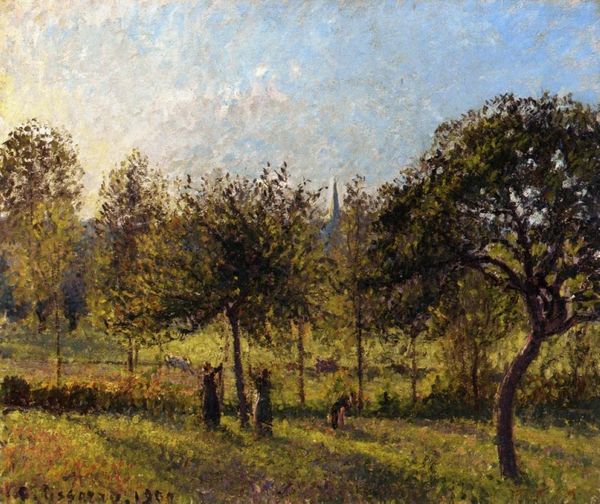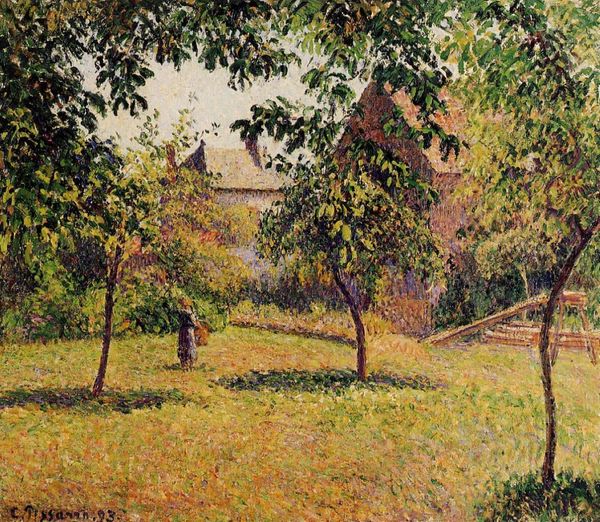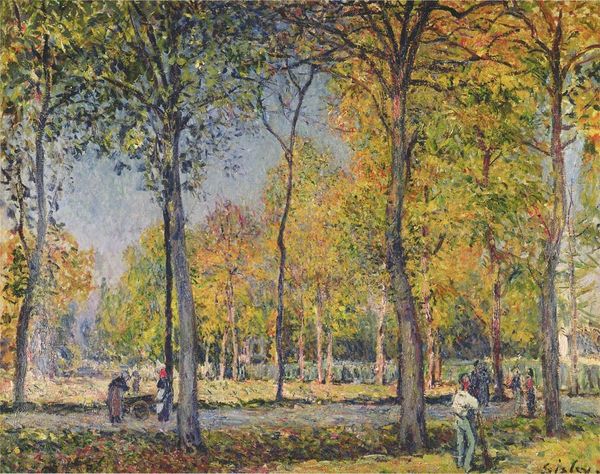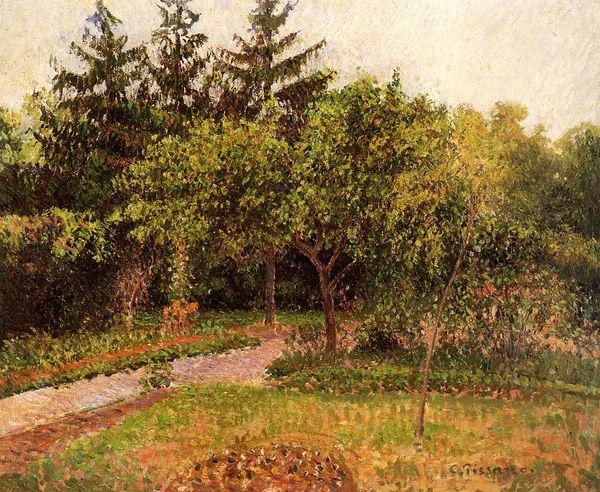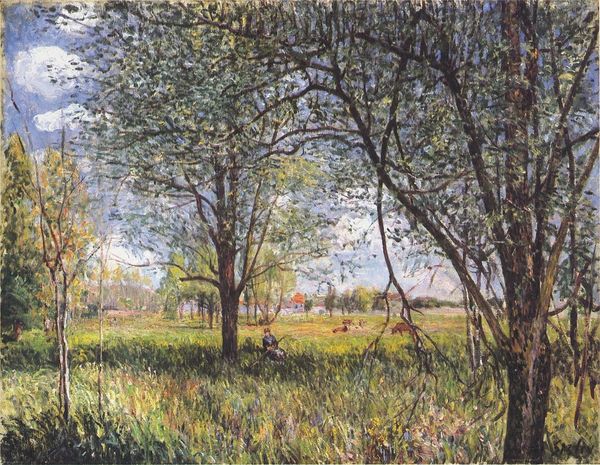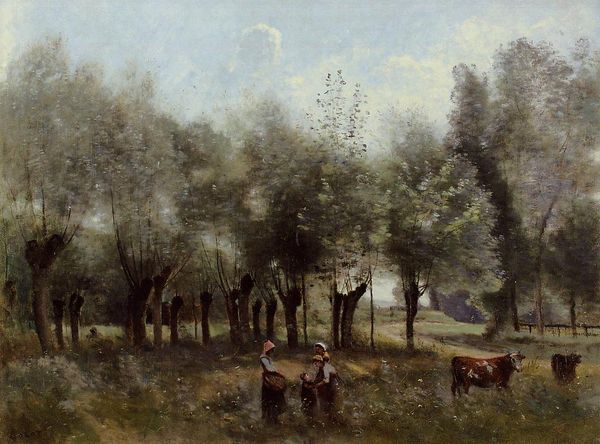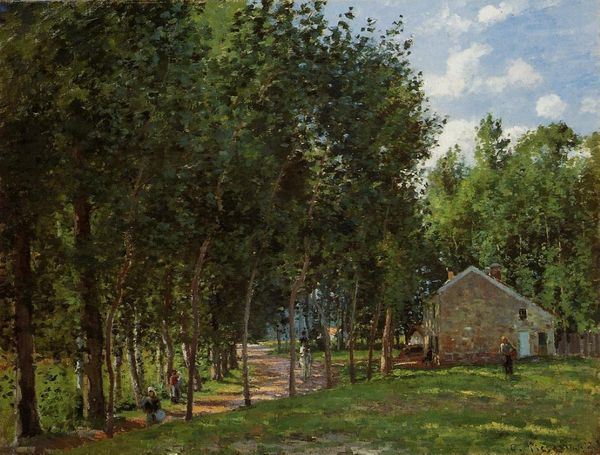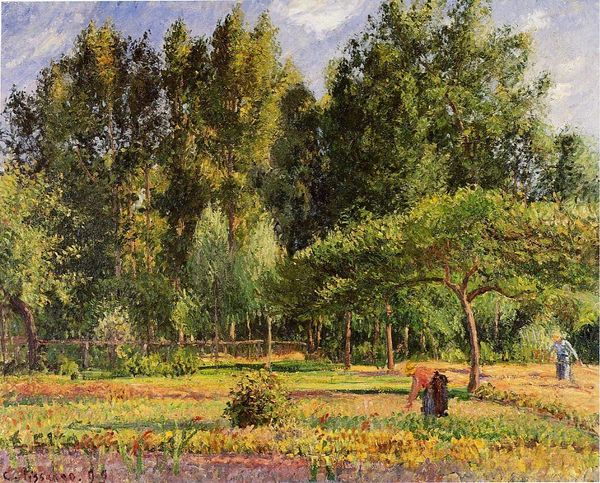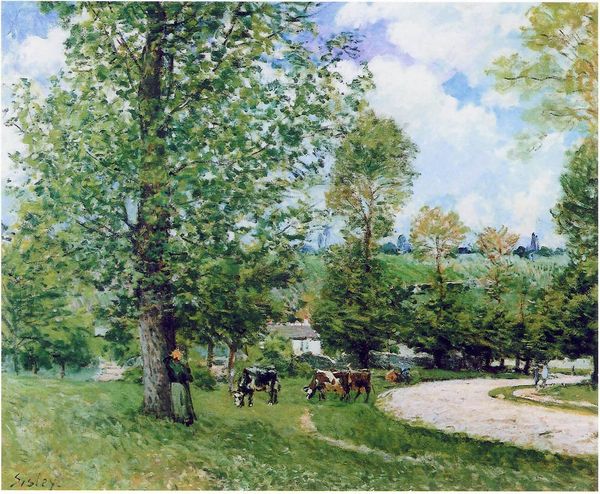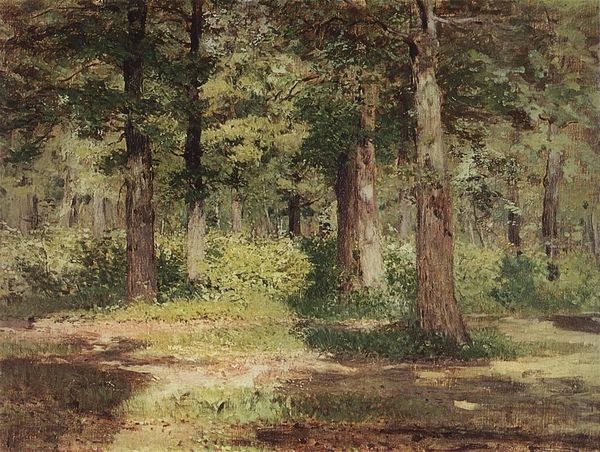
Copyright: Public domain
Curator: This is Camille Pissarro’s "Enclosed Field at Eragny," painted in 1896. It resides in a private collection and exemplifies plein-air painting, typical of Impressionism. Editor: It evokes a feeling of serene labor. The impressionistic dabs of paint create this soft, hazy atmosphere, with a somewhat confined feel within the landscape. Curator: The confinement, I think, is precisely the point. It suggests a human interaction with the landscape. The enclosed field implies cultivation, control, a managed, agrarian existence, perhaps even hinting at social hierarchies embedded in land ownership. Editor: Absolutely, and within that controlled space, we see these figures working, women tending the land. It makes me think about gendered labor, particularly in the late 19th century. How were women's contributions to rural economies often minimized or made invisible? Curator: Interesting you mention visibility, as I'm drawn to the symbolic representation of labor, reflected in the placement and form of the haystack. They might represent cyclical themes of harvest and the enduring power of nature's rhythms, a visual anchor offering a sense of constancy amid the rapid changes of the Industrial Age. Editor: The haystack against the backdrop of that encroaching darkness under the treeline hints at an underlying anxiety. Even in this idyllic scene, there's a tension between the human need to cultivate and a natural world which is simultaneously nourishing but also untamed. The dark shadows remind me of encroaching capitalist expansion which threatened to swallow the landscape. Curator: So, it becomes a symbol of resilience but also perhaps a lament? Considering its historical setting, it raises questions about the role of women as guardians of the land versus a system of patriarchal ownership. Editor: It reminds me that landscape painting is rarely just about the land. Curator: A fascinating collision of industry, labor, and nature, captured within the fleeting style of Impressionism, it all circles back to ideas about land as both sustenance and the base of social hierarchies. Editor: For me, seeing it with that new appreciation invites important questions about what labor meant in the context of a rapidly shifting socio-economic world.
Comments
No comments
Be the first to comment and join the conversation on the ultimate creative platform.
